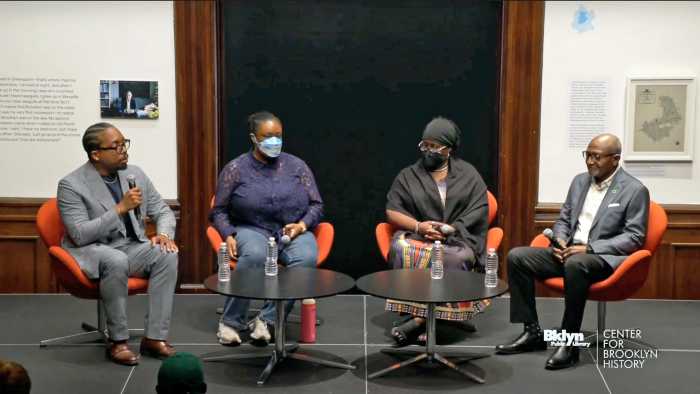Terror alert adverts inspire incongruent installation by Krzysztof Wodiczko
With a vacuum of work tackling topical issues, this show packs a punch. “If You See Something…” is the first large scale indoor installation project of Krzysztof Wodiczko, the director of MIT’s Center for Advanced Visual Studies and the Interrogative Design Group. The exhibit consists of two separate rooms, which successful individually, remain hard to reconcile together as part of the same piece.
In a darkened room with startlingly real projections, huge floor to ceiling windows line two walls. Lit from behind, people lean on the frosted glass engaged in conversation. Are they actors behind the windows? The mystery unfolds. The setting is stunning and celestial, the frosted glass reveals much but not all. The scale suggests a public space—a building lobby, a university, a train station.
Moving around the space voices become audible. “Why were you deported?” Another voice answers, “I was arrested.” Two figures gesture behind the glass for emphasis and the dialogue continues. Another window, another voice. “The worst was what happened to my daughter, nobody wanted to play with her.” A window washer arrives and cleans a pane from behind. A figure sits with head hanging. A Muslim prayer is performed in another window.
The title of the exhibition alludes to the terrorism awareness ads displayed around the New York City public transit system. The posters, meant to promote vigilance and awareness of terrorist threats, have the added effect of creating fear. All of the stories depicted in this installation are true and told with the real voices of those affected. The stories tell of lives transformed by simple mistakes and misunderstandings. The resulting grave consequences have had a lasting and irreversible effect on individuals’ lives. The stories and visuals are powerful and heartbreaking. This installation achieves that rare mix of the spatially expansive with the individually poignant.
Smaller and darker, lit with three candles on pedestals, the second room of the installation is a stark contrast to the first. This room seems to signify the darkness and trauma of war. The candles flicker as different recordings play—the soft audio of a battle in Afghanistan and a battle in Iraq. The centerpiece is the voice of a commanding soldier who gave orders to fire but didn’t fire himself. The soldier speaks of his service to his country, of what he saw, and tries to come to terms with his actions during wartime. This piece, also powerful, points to the cloisonné of war. Hidden dark secrets rest with the few who were there.
gaycitynews.com
































